
In the previous article in this series, we looked at Classic Space – and what might define the theme: More than the colours, the sets of this era were united in working together for a common goal: exploring, mining and drinking oversized cups of coffee, while wearing their spacesuits inside. We have ships, bases and rovers, with a variety of colour schemes passing by over the years.
By the time I got to 1987, I had completed school, and was just starting off at university. My brother had recently stopped playing with our bricks, and they were put into storage – to be retrieved as we both gained children of our own. I was well and truly into my Dark Ages. All I know has been derived from fellow AFOLs, catalogs, the brickset database and picking up the occasional set or three along the way.
Futuron
As we enter the second half of 1987, we see a few things change: We see the arrival of Futuron. Maintaining a similar colour scheme to the final sets of the classic era, and incorporating some similar elements in their design, there are also some changes. In the Futuron of LEGO Space, the spacesuits’ design evolves, bringing up a fashionable zipper under classic space LEGO on their suits, with a blue visor on their helmets: already demonstrating themselves to be more sophisticated than their classic antecedents. Large bent transparent panels and domes appear. And a neon grid stretched across the heavens on the box artwork: the future was now! And somehow, I have yet to posess any of this range.
We saw the development of habitat domes and monorail- greater inclusion of larger window panels: a society approaching the utopian ideal. A society having something others would covet: ideas, plans, and maybe even secrets. And if a society should have something others might covet, then who knows how the others might respond?




Blacktron





This brings us to Blacktron: predominantly Black and yellow, these sets brought us sinister rovers, enigmatic flyers and the mysterious Message Intercept base. While Futuron presented us with sets in white and transparent blue, Blacktron presented us with elements in black, yellow and transparent yellow with flecks of transparent red here and there.
With their faces hidden behind opaque black visors, these intergalactic crooks were heading to steal secrets, cargo and more. This was the first time any LEGO theme specifically had bad guys- well it coincided close enough with Pirates doing the same. These early sets featured some really neat parts usage, including the use of corner panels, previously limited to castle sets, as cargo bay doors.



Although Blacktron only had the featured place in 7 sets, they still presented a serious threat to society. So much so that the Space Police were called in to help deal with them.
Space Police
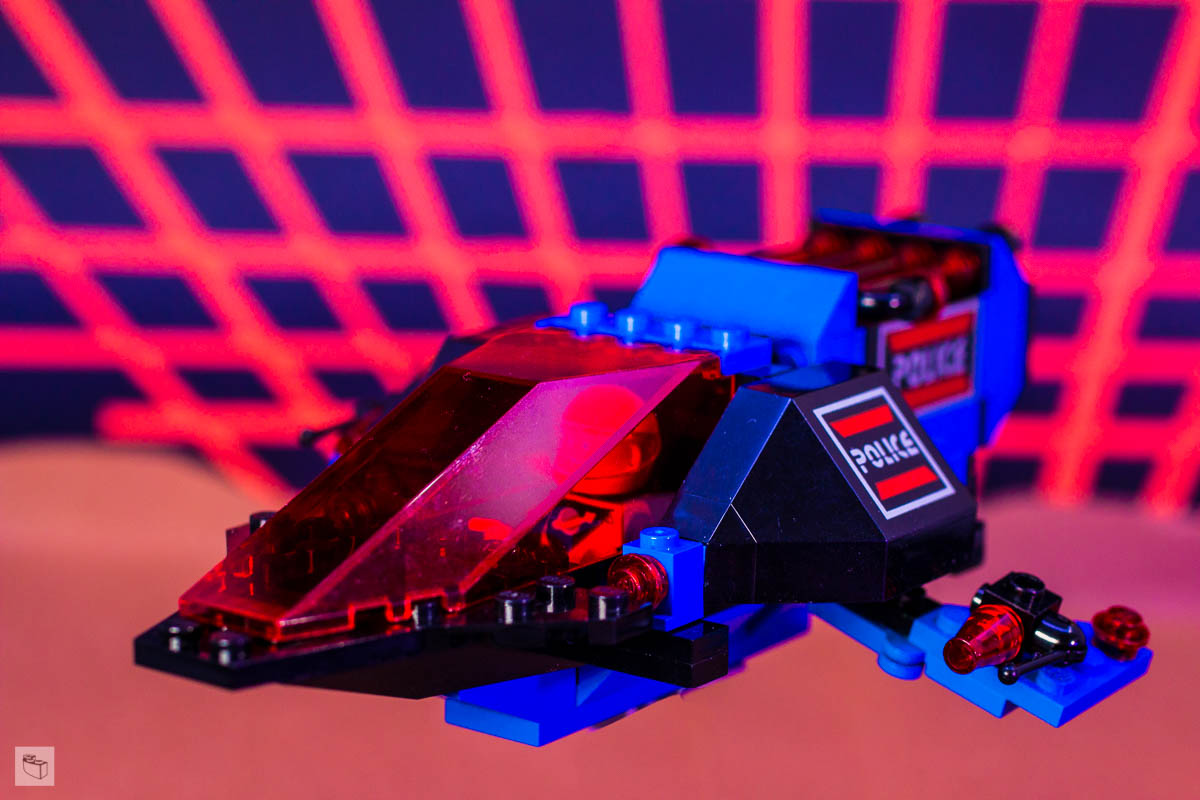


Released in 1989, this theme resplendent in black, blue and transparent red brought a similar spaceman to futuron: this time with a black torso panel and sleeves. A transparent red visor on their helmet completed the effect. The larger space police sets also brought us a Blacktron astronaut – ready to be locked up, transported and locked up again.



These sets also introduced a number of elements which go on to drive the appearance of the space themes over the next decade: particularly the new design of space wheels, as well as the elongated windscreen. The colours might change, but the elements would define the forms we would see for the rest of the century.
M:Tron


Moving forward into the 90’s, we saw our first look of this futuristic design: neon yellowish-green, red and black formed the palette of M:Tron. But what was their purpose? The ‘M’ stood for Magnets, but did it also mean Miners? Or Movers? Every sizable set had a vehicle with a cargo compartment. The introduction of magnets brought a great play feature to the sets, and became an occasional feature over the next few years. Unlike previous themes, the largest set in M:Tron was not a capital ship, or a base, but rather a large vehicle: the Mega Core Magnetizer.



The introduction of fluorescent transparent colours into the LEGO Palette brought these space sets a futuristic tone. The product photography really popped, and there was no doubt that these sets were from another world.
Blacktron’s Back


The ore they were mining must have had some sort of real value, because in 1991 we saw the return of a new, invigorated Blacktron team: with a new colour scheme: Black and white and neon; and new uniforms: with their white torsos with black and green logos. The new Blacktron agents had the same grins as before, however we can now see their faces through the transparent neon visors.



Space Police II


But of course with new malicious factions, we have a need to bring them back in, and thats where the second incarnation of the Space Police come in. Led by Captain Magenta, these Space Police had no base to speak of, but the grandeur of the Solar Snooper and the Galactic Mediator cannot be denied.


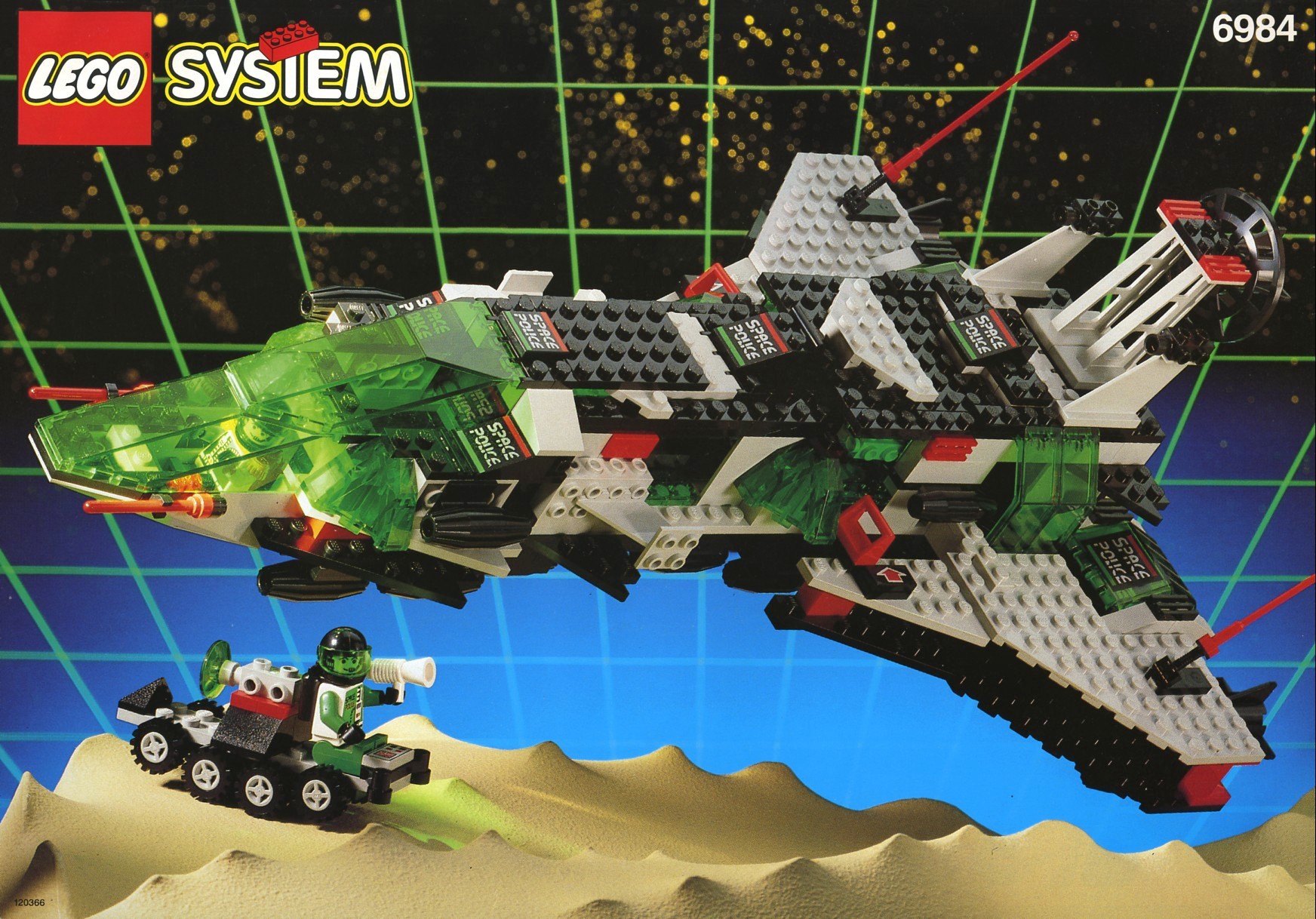
It’s Pretty Cool On Ice Planet 2002

But the arrival of the Space Police did not dispel the threat of Blacktron II: these miscreants continued provide cause for concern as the rocket researchers of Ice Planet 2002 as they rolled out in 1993. The Planet Krysto is located in the centre of the known universe, making it an ideal site for the team to work. We spent some time talking about Ice Planet last year, and rather than dwell on it here, I will just highlight the things that made this a significant theme: faces not based on the classic smiley, a female team member, an awesome colour scheme (Black, blue , white and transparent fluorescent orange) and a distribution of sets resembling thre early years of Classic Space. While Space Police 2 started to give us identity, Ice Planet 2002 brought us character. Each member of the team had their own look, and their own character. Oh, and neon orange chainsaws! Ice planet brought us everything that you might expect from a space theme: A base and Capital ship; smaller flyers, a couple of rovers – all specially equipped to deal with the icy world there they worked.




Putting the ‘Spy’ into Spyrius



In 1994, the Blacktron threat was overtaken by a new faction: Black, red and-transparent blue, Spyrius was a faction whose primary trade come from computer secrets- setting out to steal the result of the iceplanet research. Led by the mysterious Major Kartofski – a robot pyrian, seemingly controlling the operation. The Spyrians took great pride in building giant robots to protect their assets, while their primary base was hidden in the heart of a mountain.



Unitron
Finally, in 1995, we saw the arrival of Unitron: with only a few sets, and relatively limited in their distribution, they brought another monorail to the table. Spryrius was still the enemy. Like Futuron, Unitron continues to evade my collector’s efforts.
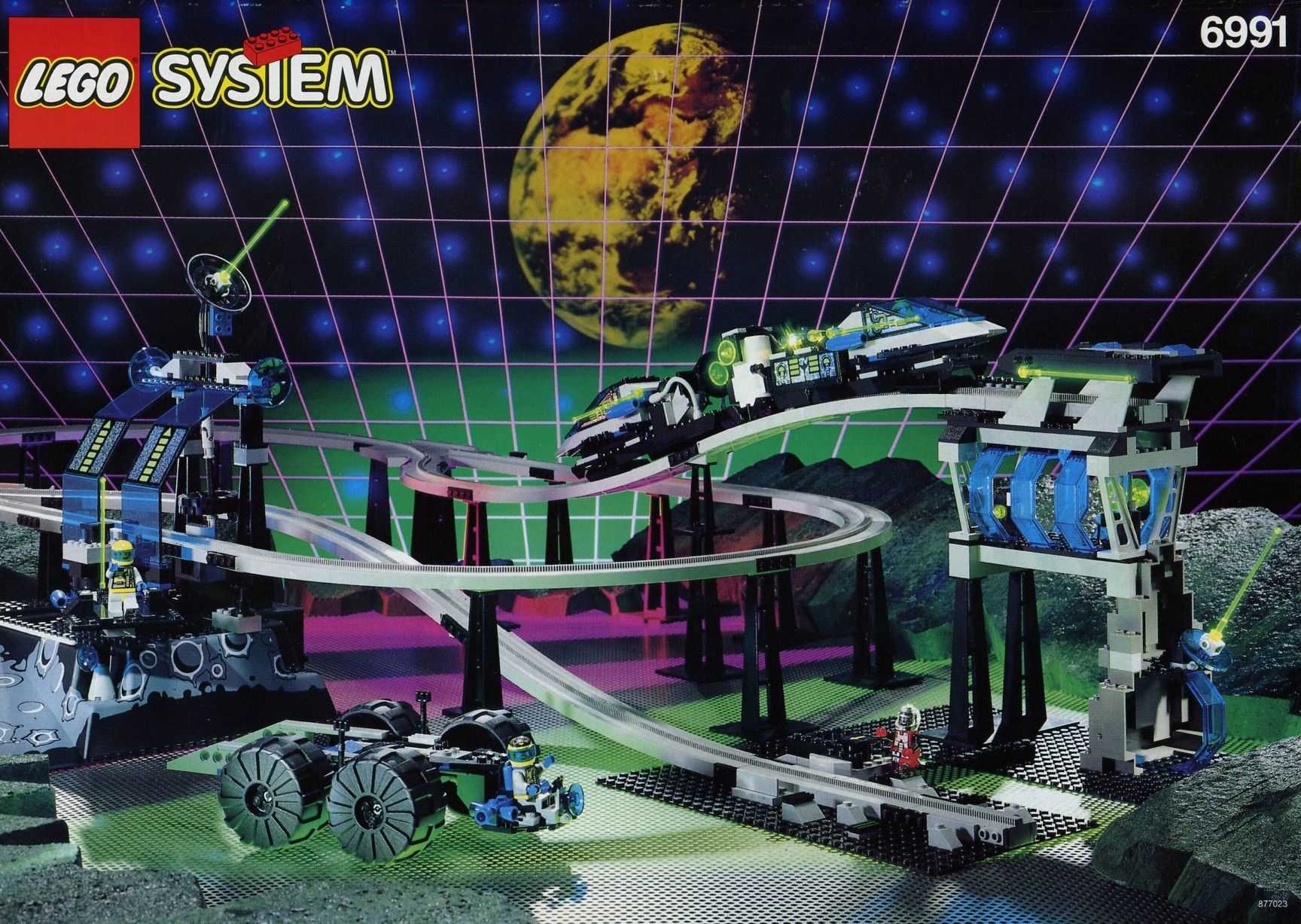


Exploriens


Up until this point, we have typically seen alternating protagonists/antagonists: but there is a change in pace in the waves that follow: Exploriens in 1996 brought us a return to the original values of exploration, with small and large flying craft, small and large rovers, and a couple of bases. And no natural predators. We had tiles for our teams to scan, and by looking at them transparent red and blue elements we would see different aspects of their discoveries. There were elements that defined the look of the theme, while the craft were essentially white, with black trim and transparent elements providing highlights.
On a seperate note, we see the neon grid removed from the boxes’ artwork at this time, replacing it with swirling colours – colour filtered nebulae, galaxies and a somewhat ominous black hole…



UFO

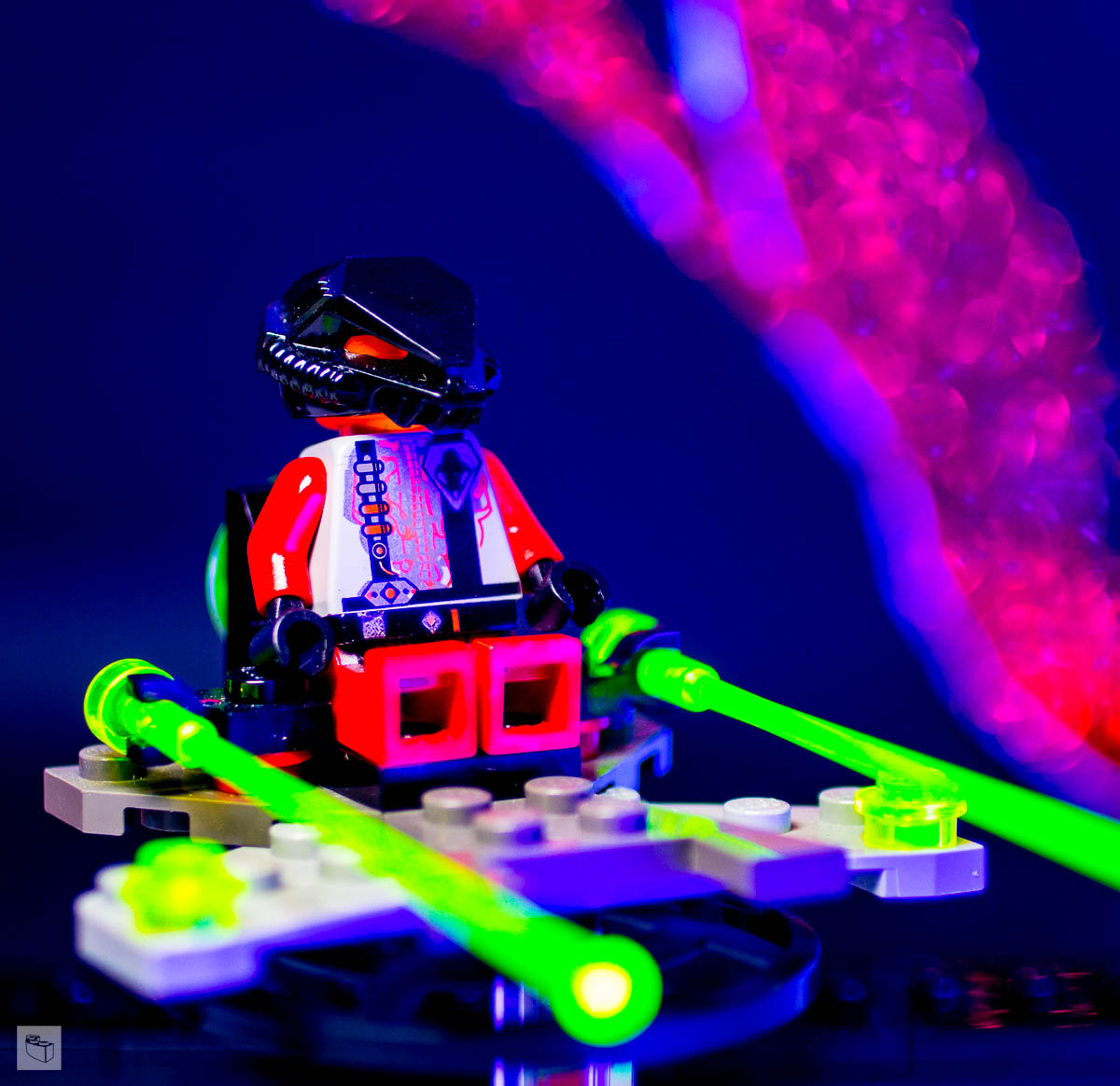
The galaxy was under threat once more in 1997, with the arrival of UFO – a return to the neon yellowish green of blacktron and M:Tron, these visitors from another world felt slightly more malicious. With large, round sloped elements, some sets also featured fibre optic lighting and highly detailed prints. With angled elements, there are aspects that look like they owe design cues to the original star Wars movies from years before. But with lots of angular spikes, neon antennas, these craft looked like they were setting out to make people miserable. Other people, not the aliens in question!




Robotron
There was another curiosity released in 1997: Robotron. Restricted to North American release, this series looked like it was created with the excess elements, swept up off the floor: almost like the Time-Cruisers of space themes. There is no doubt that the designs of these robots were creative – with exotic colour palettes, crazy shapes, and call outs from Ice Planet, Blacktron and Exploriens. Their practicalitycould, however, be called into question.




Insectoids


The final space theme of this era was (probably) Insectoids, in 1998-1999. This theme included a race of aliens- the Zotaxians – who had fled their home planet, and landed on the planet Holox where, in order to survive, they needed to disguise their crafts in an insect form. The grey, black and blue, along with transparent green models were all fashioned after insects. The Zotaxians collected voltstones, a crystal like element, which provided power for their craft. Or… if you read the UK catalogs: ”The Insectoids continue to infiltrate Earth as Planet Armeron becomes devoid of the Voltstone Rock – the rock required for powering their flying vessels. Will they conquer earth, or are we strong enough to prevent the Insectoids taking over our planet!?!” I found this tale of conflict strange, in the absence of any earth forces to take on the encroaching insectoid hordes. Perhaps this story was retrofitted to increase the feeling of drama. This theme also featured a new sound and light element, to add extra action to the kids’ play with these sets.This is another theme where the ‘biggest set’ is essentially a mobile base.



In 1999, there were a few other sets of interests released around the same time: We saw the introduction of LEGO Star Wars, as well as Rock Raiders. Rock raiders saw a single wave, set on an unihabited planet, where the miners sought crystals, to be challenged by lava, crystals and rock monsters. Did this count as a LEGO Space theme? or under Adventure/Action?
This represents the end of the ’factional era’ of LEGO Space sets. During this era, we have seen a pattern of factions in competition with subsequent factions initially: The early Futuron, Blacktron and Space Police may have occasionally overlapped characters, but as we entered the era of the neon palette, we only saw figures of one faction appearing in any given set, except for the small minifigure collection boxes.
What was the benefit of ‘factional themes?’
At this time, children’s play was primarily driven by their own imaginations: they weren’t trying to reenact their favorite scenes from the cartoon where the set featured: the storyline was essentially up to them. They could decide who was good, and who was bad – although the catalogues would give you a pretty good idea, and might provide ‘story starter’ ideas. Seperate factions made it easy to switch up the teams on an annual basis: Last year it was Blacktron vs Ice Planet. This year its Ice Planet vs Spyrius then Spyrius vs Unitron. It also meant that each faction was given roughly equal treatment: small ships, large ships, base, rovers. Meanwhile, in the equivalent ranges these days (Monkie Kid, Ninjago) – you are likely to get a small rover or flyer for the team opposite the ‘hero model’ – Sets were still being produced in parallel for ‘adjacent’ factions.


The last few themes – from Exploriens on – essentially felt stand alone: they did not clearly tie into the mythology of themes either preceding or succeeding them.
While neon elements were not essential for every subtheme, there was another thing that these sets had in common: Each subtheme had a carefully defined colour palette – and only elements from this colour palette would be included in the set. Compare this with sets of today, where elements not visible in the final build might be a bright, contrasting colour, to aid in orienting the builder to the model during the construction process.




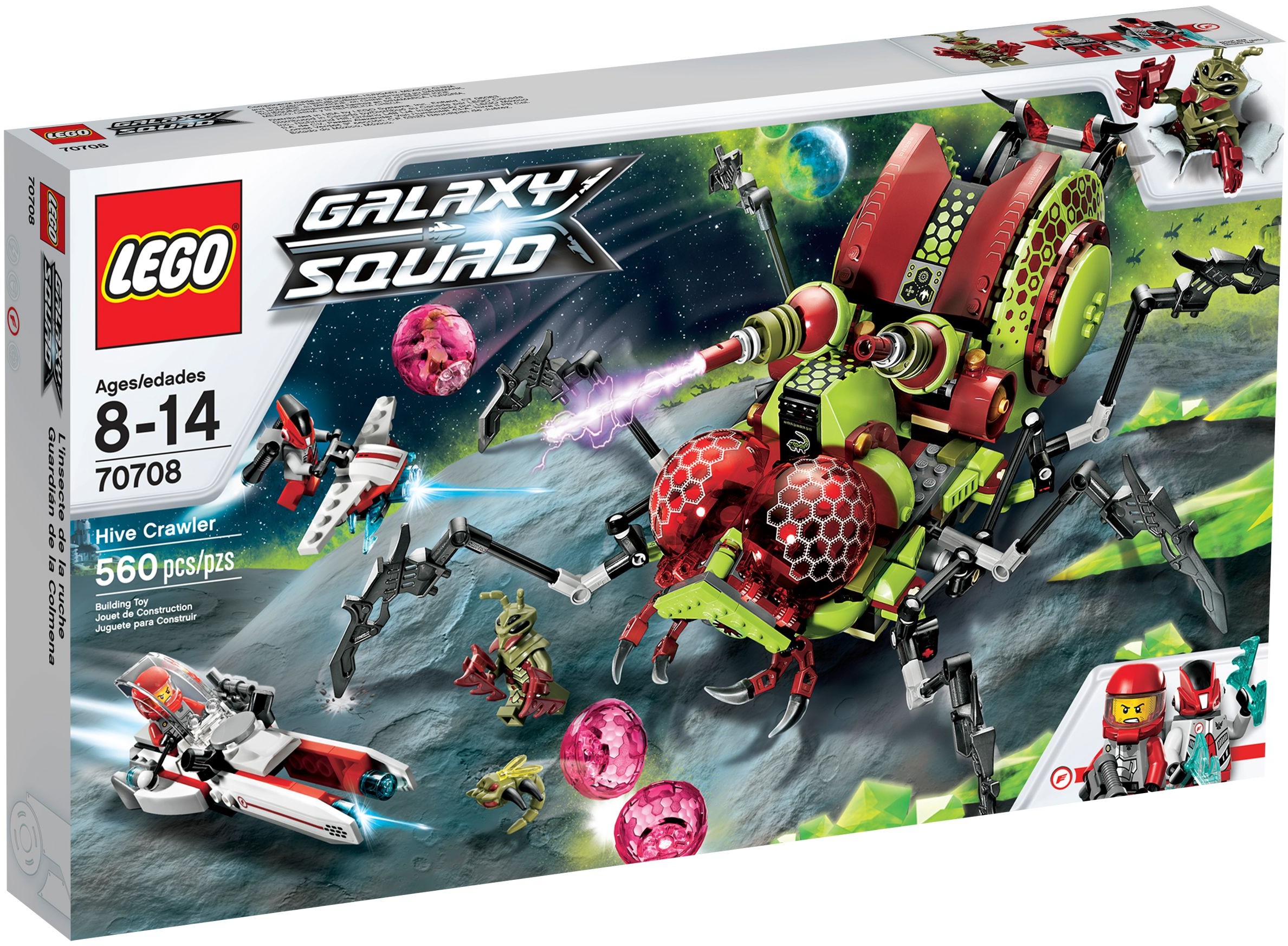

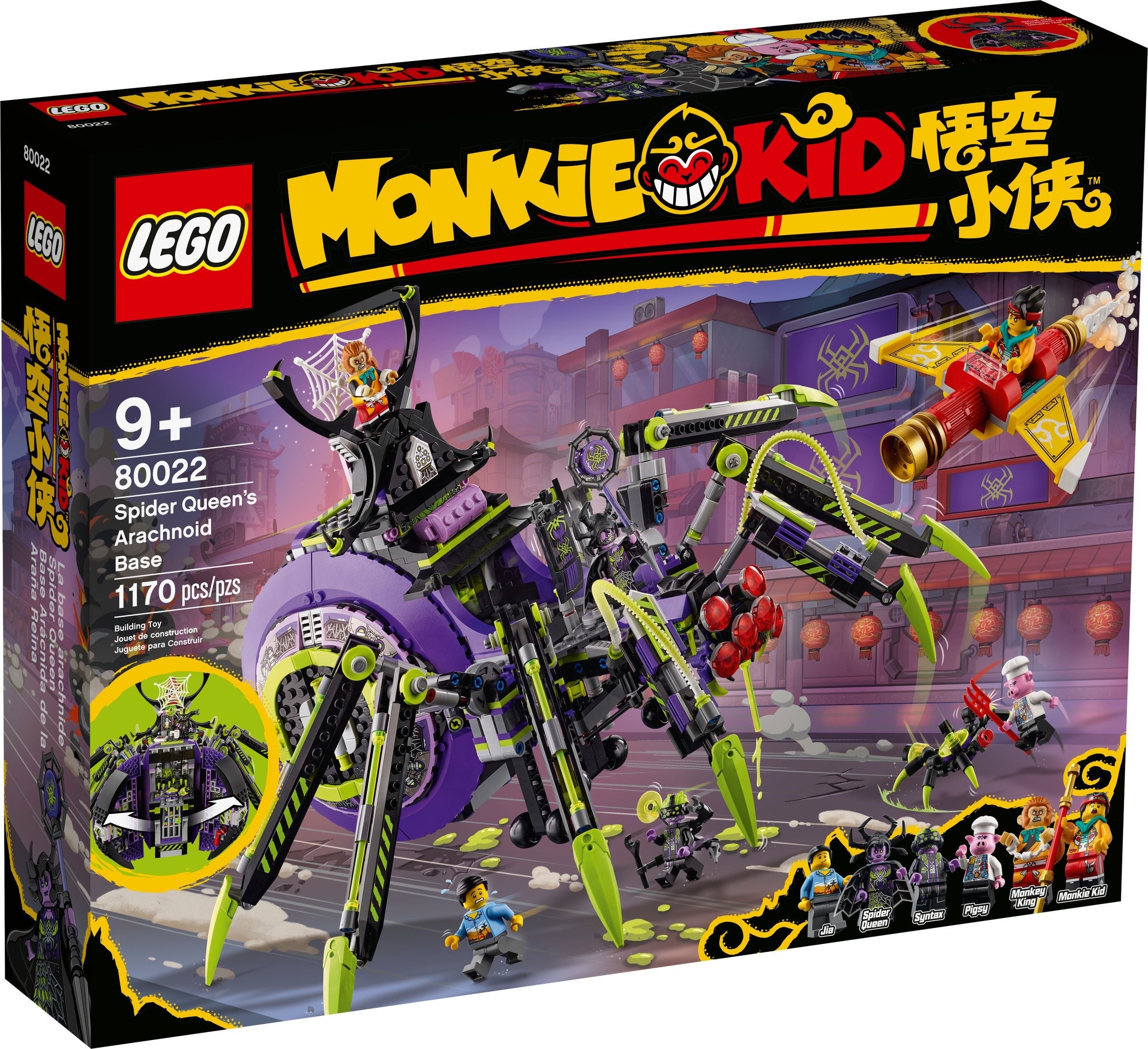


As we enter the 21st century – We find that themes are more likely to incorporate multiple factions in a theme. We shall discuss this era of ‘Conflict in a Box’ next time, taking in Life on Mars, Mars Mission, Space Police and Galaxy Squad before rolling into the Era of Animation: where LEGO’s in house creative themes start to be accompanied by animated stories – Nexo Knights, Ninjago and Monkie Kid all spring to mind here. LEGO City has also been getting a look in here – with the LEGO City Adventures taking off into space back in 2019, as well as the new Artemis inspired sets released this year. The sets of today are not only telling the new stories: we now have a new generation of designers who grew up on the themes of the 90s and are bringing aspects of these builds into the sets of today. This is the Legacy of the classic Space Themes (not just Classic Space) and we will take a closer look at all of these in our final instalment.

Did you grow up with any of these themes from the 90’s? Which were your favourites? Why not leave your comments below and until next time,
Play Well!
If you enjoyed this article, why not follow the Rambling Brick by signing up to our mailing list – we won’t use your email address for anything beyond providing you with updates. You can also follow The Ramblingbrick on Facebook, Twitter or Instagram. Also – if you are shopping for LEGO sets from LEGO.com, why not click on our affiliate links – the Rambling Brick might receive a small commission, which goes toward maintaining the site.

Oh yes, great to relive my childhood themes.
Never had had any of the big sets, just small sets – M-Tron, Space Police and Spyrius – perhaps that’s why I favour the small sets and polybags nowadays. Poured over the catalogues dreaming of a monorail!
Loved the colours as a child – particularly the fluoro antennas. Nowadays (2 years since end of Dark Ages) using the old Minifigures and parts in new ways – Minifigure habitats and a Spyrius Mecha
Any chance of a piece on Pirates?
All in good time
That’d be great. Special mention of the monkey please
That goes without saying 😉
Castle might come first though… for reasons.
“for reasons.”, You’re reviewing a much anticipated 90th anniversary set which pays homage to Castle?
At this stage, not to my knowledge, but I do have a few castles on the ‘to build’ pile …
I grew up in the 2000’s and as a kid my favorite theme was Alien Conquest, I loved the Tripod designs and the face hugger-esque aliens you could pop on minifigs. I played with those sets the most, and therefore lost most of the pieces over time.
I hope to take a look at the more modern space sets ‘soon’
[…] I have continued to explore the worlds of LEGO Classic Space and beyond, I have seen it through old catalogue scans, battered box photos and crumpled, stained […]
[…] trends in space exploration, instilling an appreciation for science and technology. With the LEGO® Space Factions of the late 1980s and 1990s, children could explore themed sets that depicted teamwork in space, […]